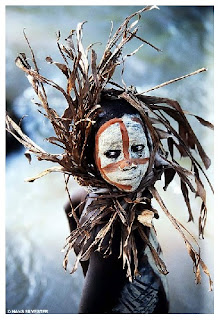The feeling of textiles on the skin is a sensual, pleasurable one and to see how they move in various constructed forms down the runway is a pleasurable sight for many. It is also an artistic showcase. Charles Eames' implication is correct. Pleasure is useful because it activates positive feelings and catalyzes some of the best artistic thoughts and inspirations.
Here are some photos of the late Alexander McQueen's runway designs:
Sources:
The best fashion designers make people want to wear their clothes because donning their creations would make the wearer happy and feel an immense amount of pleasure. McQueen's designs not only produce this by the use of textiles or through unique construction, but also with the design's inventiveness. Fashionistas love to wear clothes that make them stand out. This gives them pleasure. Wearing these types of clothes is desirable for several men and women. This inspires or prompts manufacturers to make similar clothes to fulfill this pleasure for consumers.
Throughout the Design Q&A film, Eames talks of the relationship between design and purpose. One of the purposes of design can certainly be to create pleasure for the wearer, viewer, "experiencer", etc. In addition, working within the constraints that is involved in every design process can be intellectually pleasurable for a designer. This can challenge the designer to come up with the best and most creative designs.
The designs photographed above are luscious, luxurious, and, the word of the moment: pleasureful. Even in a still photograph, one can tell these clothes move brilliantly. To make something look so effortless, yet inventively complex is fantastic design. To invoke such pleasure into the viewer is also fantastic design.
For more Alexandar McQueen pleasure, visit http://www.alexandermcqueen.com/
To watch the Design Q&A film, visit http://www.youtube.com/watch?v=z8qs5-BDXNU
For more Alexandar McQueen pleasure, visit http://www.alexandermcqueen.com/
To watch the Design Q&A film, visit http://www.youtube.com/watch?v=z8qs5-BDXNU



















.JPG)




